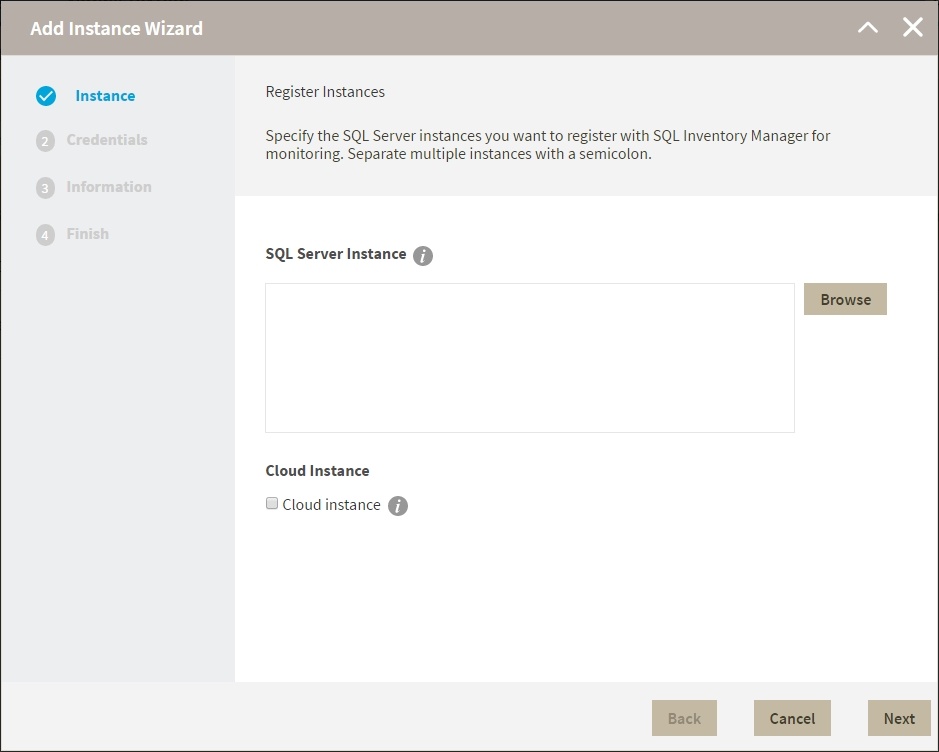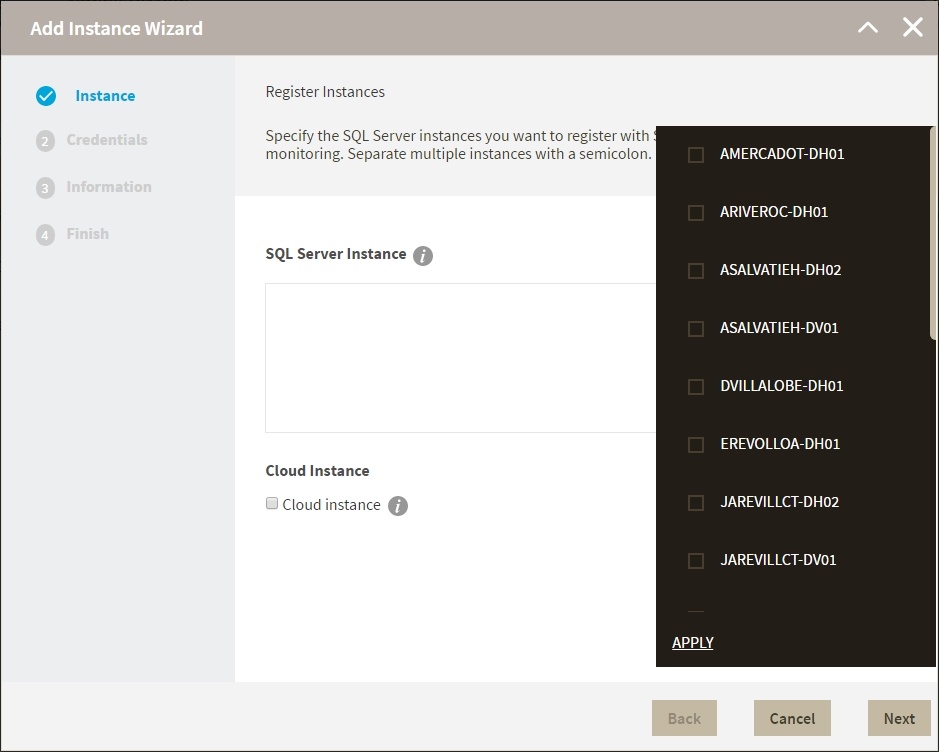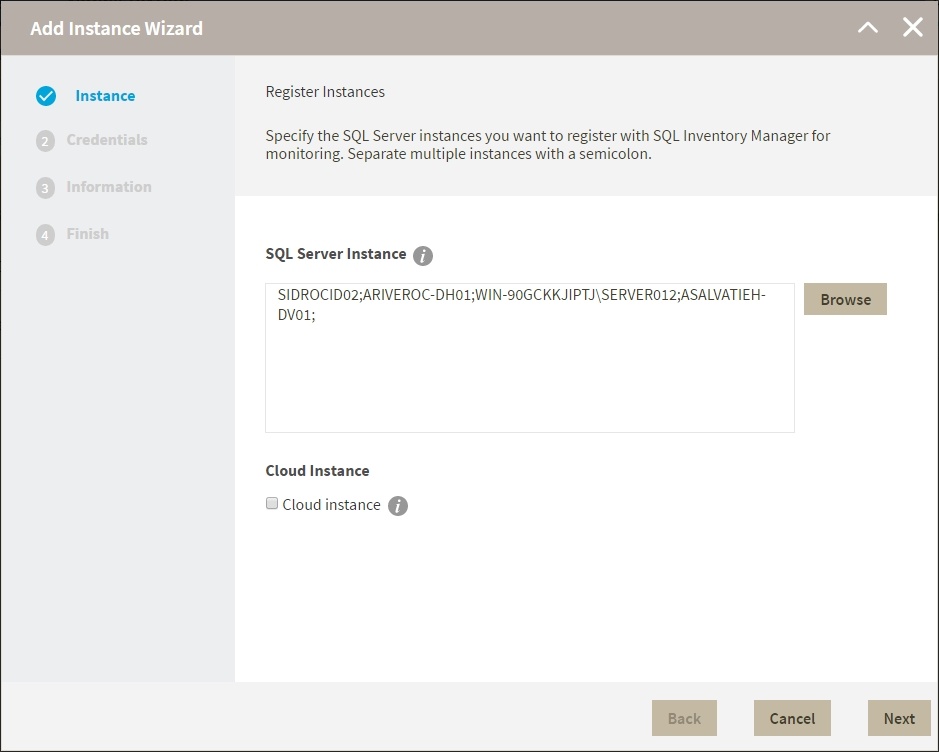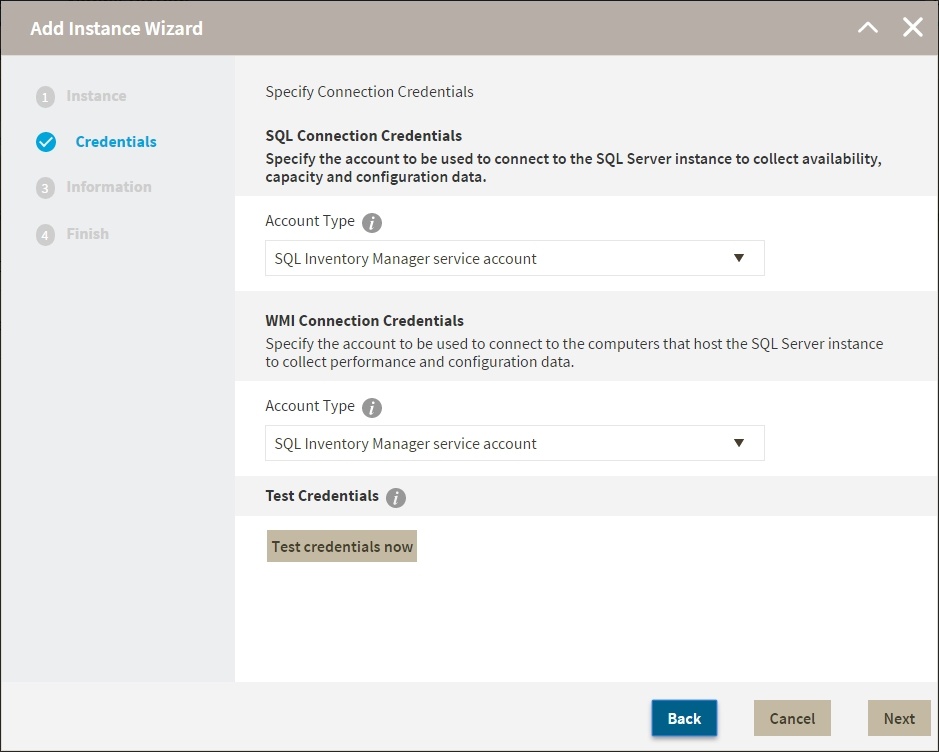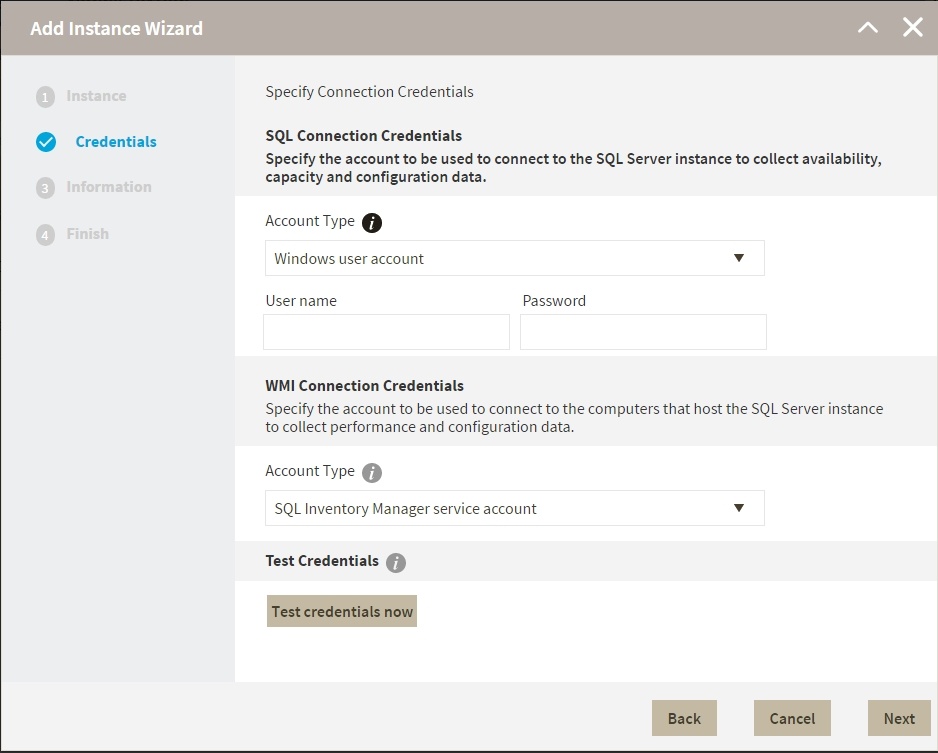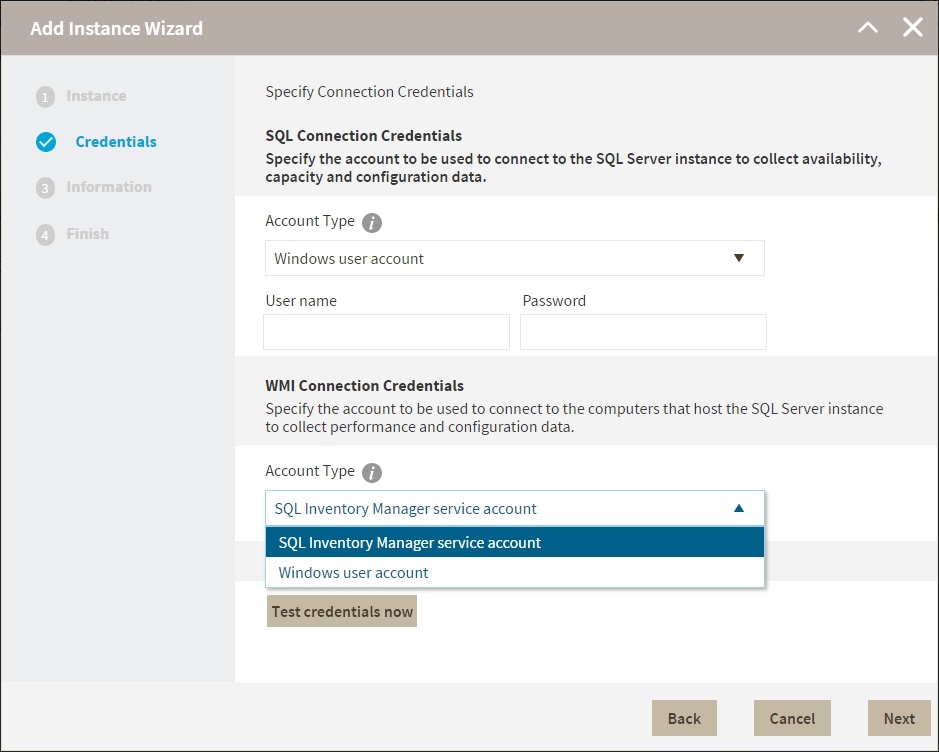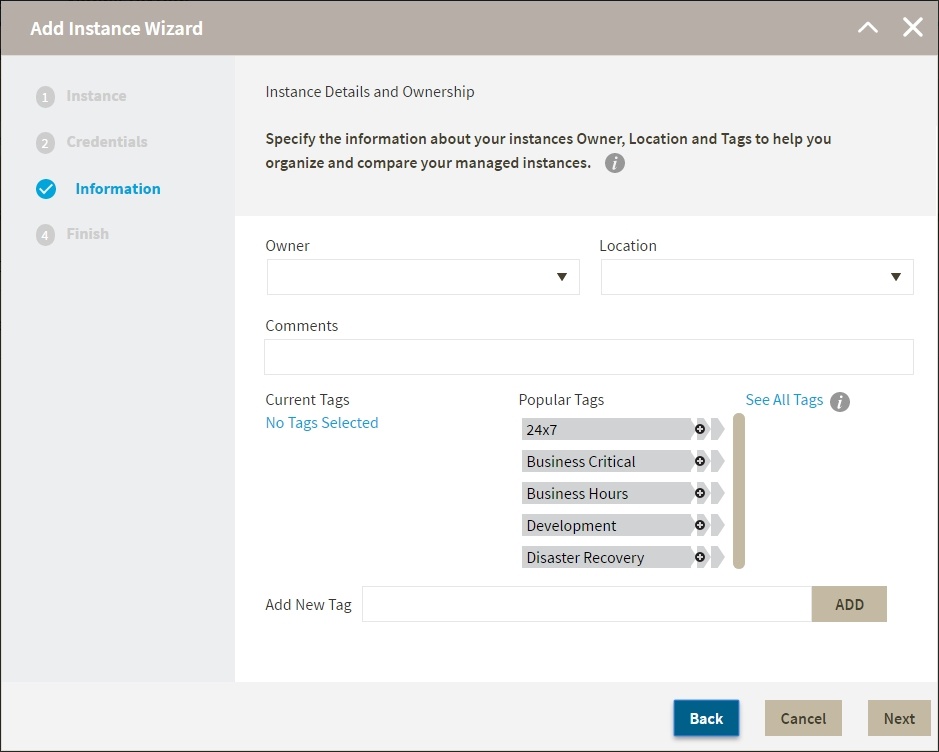Page History
...
Type the name of instance or instances you want to register in the SQL Server Instance box. Use a semicolon to separate multiple instances.
Info When you select instances on the Discovered or Ignored Instances views, the wizard already adds them to this box.
You can use
Use the Browse button to access a list of discovered instances that have are not been yet registered yet with SQL Inventory Manager. Check the box next to the instances you want to add, and then click Apply.
- Click Next to go to the next section.
...
| Tip | ||
|---|---|---|
| ||
For more information on what are about the minimum required permissions for these accounts, click | ||
| alias | here | url | see Required accounts and permissions.
| Info | ||||||
|---|---|---|---|---|---|---|
| ||||||
If you want to know how to authorize WMI users and set permissions, click
|
By default, SQL Inventory Manager connects using the SQL Inventory Manager Service Account. However, if you need to provide alternative credentials for any of these two connections, you can choose from the respective options on each section.
...
- Specify the type of account that you want to use to access your SQL Server instance and collect its information. If you do not want to use the SQL Inventory Manager service account, you can choose to use select a Windows user account or a SQL Server login account from the Account Type list.
- If you select a Windows user account or SQL account or SQL Server login account, type the respective associated user name and password. SQL Inventory Manager uses this account for SQL queries to gather availability and configuration data.
...
- On this section, you can choose to use the SQL Inventory Manager service account or a Windows user account by selecting either of them from the Account Type list.
...
On this section you can specify additional information for your instances like Owner, Location, Comments Comments, and Tags.
Although none of these fields are required, Owner, Location, Comments, and Tags provide a powerful method for grouping instances and help and databases to help you organize your managed instances. You can use resources. Use these options to view information such as database counts, size, or activity, grouped by these fields.
Use the Owner and Location drop-down lists to access all the available options.
To add tags to an instance, you can do one of the following:
- Click any of the suggested Popular Tags on the right side of the window. The tag appears now on Current Tags on the left.
- You can click See All Tags on the top right section to display all available tags.
If you want to Add a New Tag, type the name in the bottom box, and then click ADD. Your The new tag will be is added to the Current Tags list.
Warning - The tag name must begin with an upper or lowercase alphanumerical character.
- Your tag name must have a maximum length of 20 characters.
- Only the following special characters are valid for tags: ! # @ ( ) ' . : - _ and embedded spaces.
Tip Refer to the Managing Tags section for more guidance on how to add, view, edit, or delete tags.
...
